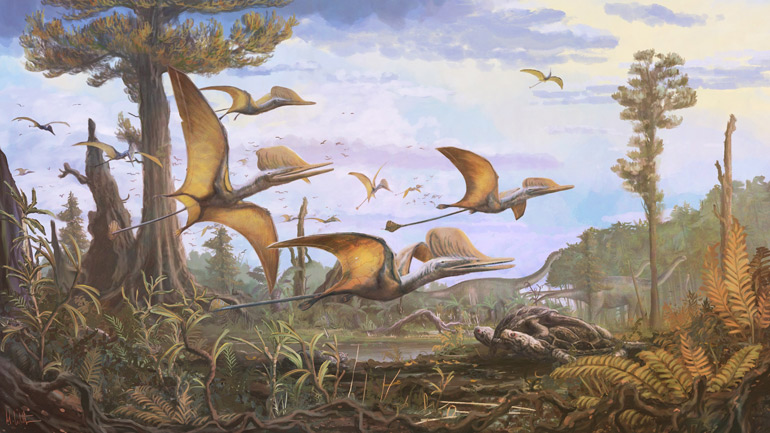
A new species of pterosaur, Ceoptera evansae, has been discovered on the Isle of Skye in Scotland. The discovery was made by scientists from the University of Leicester and other institutions who analyzed partial skeletons found on a small beach along the coastline. The fossils were first discovered in 2006 and have since been studied using digital scanning to reveal multiple elements of the skeleton that were previously inaccessible due to being embedded in rock. Ceoptera evansae is among the earliest vertebrates known to have evolved to be able to fly, and lived alongside avialans, the dinosaur species believed to evolve into modern birds. The discovery has led researchers at the University of Bristol and other institutions closer to understanding pterosaur evolution.




